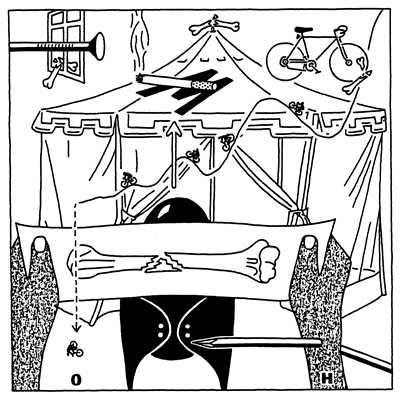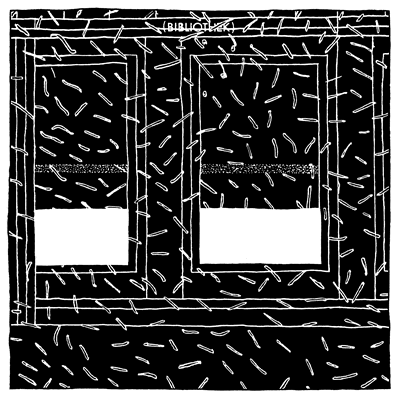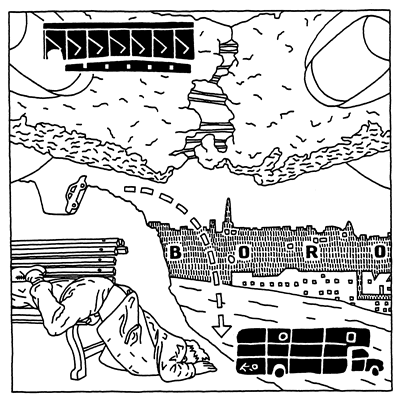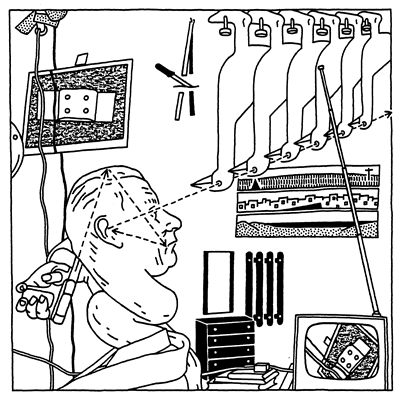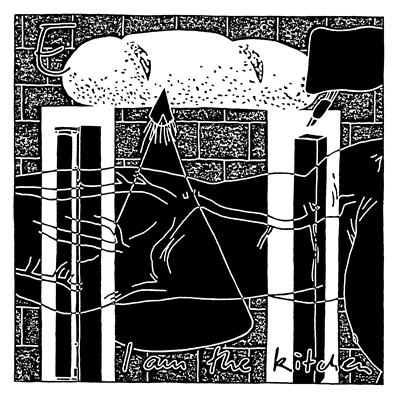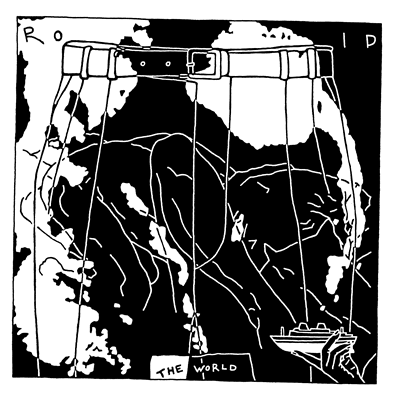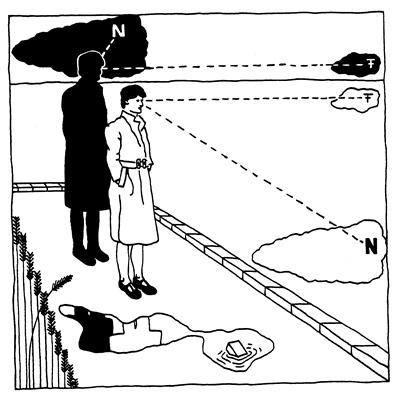Drawing (30) from THE BASIS OF MAKE-UP
"A small encyclopaedia of my fractured arms: As an 11 year old, I broke my right forearm jumping over a tent. The complicated fracture was nailed. I wasn’t allowed to take part in gym for months, which I hated anyway. Many Nazis degraded from German to gym teachers continued to work there. When I was 12, I fell from my bike and broke my arm again, so I was excused from gym once more. As a 13 year old, I was run over by a bicycle. The broken bones along with the bent silver nails grew on crooked. At 14 my elbow was deliberately broken to remove the nails and set the arm correctly. I was still allowed to take it easy and meanwhile started smoking cigarettes. The quintessence: Unconsciously caused fractures of the arm for fear of Nazis teaching sports, in addition, addictive experiences with the release of opiates produced naturally by the body when fractures occur. For this reason the opium tent. " (From: arsenal, january 09).
(1984)


